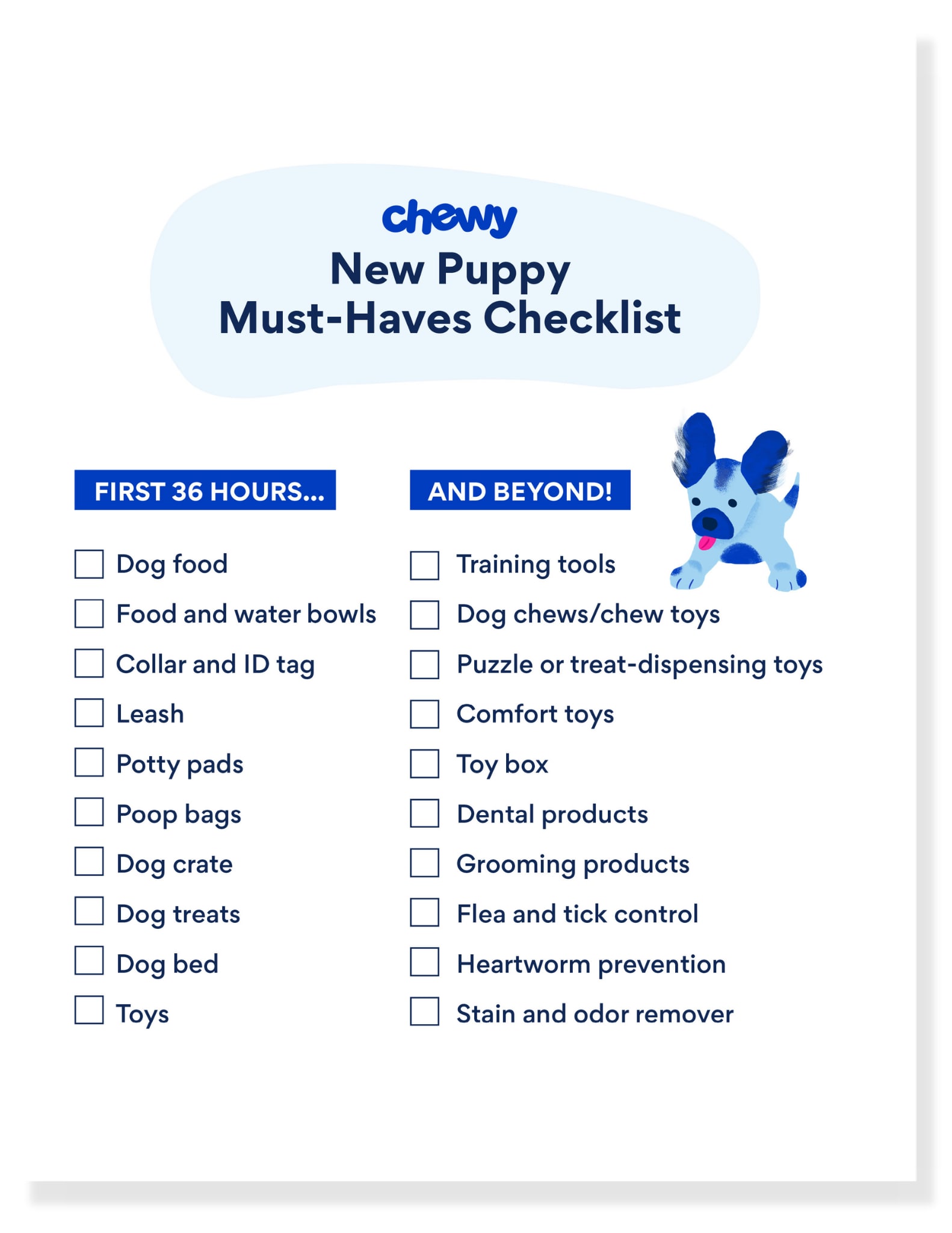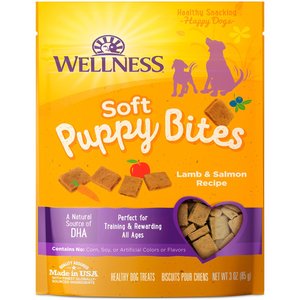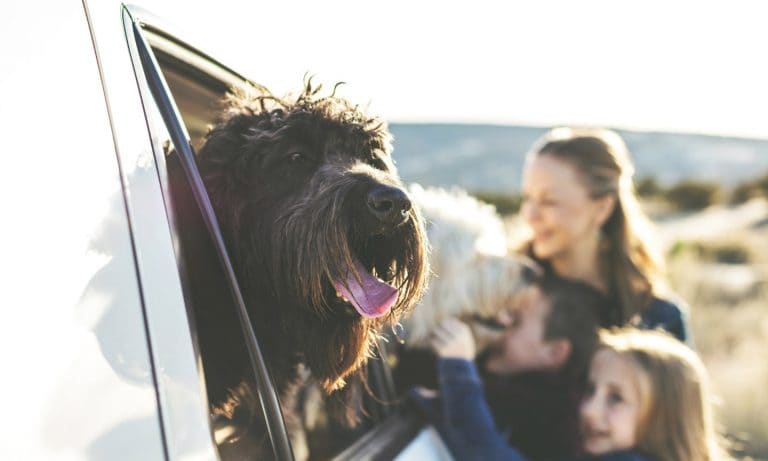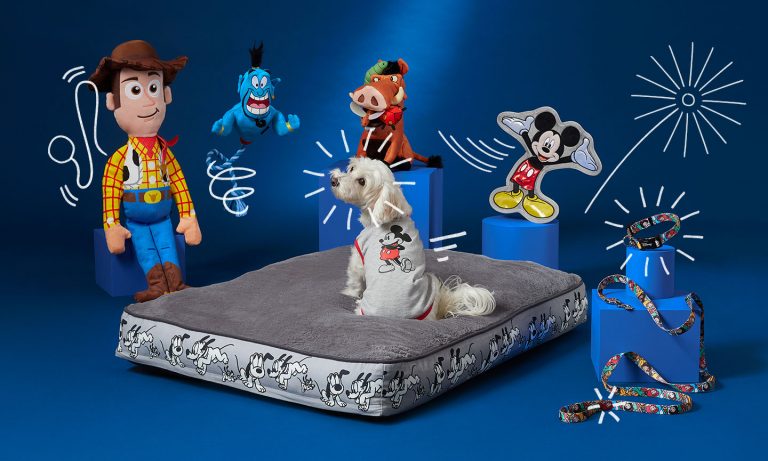Bringing home a new dog can mean tons of sloppy kisses, snuggles and tail wags coming your way. And while you’re about to embark on an exciting new adventure as a family, it’s important to note that this transition can be a difficult time for your new addition.
“Sometimes it can be hard to remember that moving into a new household can be stressful for a new dog, and it can take time for them to adjust,” says Dr. Sandra Mitchell, owner of All Creatures Veterinary Services in Bangor, Maine. “So, being careful not to overwhelm them initially can help them to adjust.”
Dr. Mitchell recommends giving your new dog his own space, such as a small room or bathroom, providing him with downtime, and staggering introductions with family and friends so they happen over time, not all at once.
It also helps to have basic dog supplies on hand to ensure a smooth transition. Of course, you’ll need the essentials, like dog food and poop bags (trust us, you do NOT want to be caught outside on a walk without one of those nifty plastic baggies). You’ll also need training tools, like a dog collar and leash for leash training or a dog crate or kennel for crate training.
Dog Supplies for the First 36 Hours
- Dog Food – This is preferably the brand your dog was eating prior to coming to your home to prevent tummy upsets. You can always work on transitioning him to a different dog food later.
- Food and Water Bowls – You’ve got to have something to serve your pupper his supper in, and a way to keep him hydrated.
- Collar and ID tag – Your dog is in a new neighborhood. If he gets lost, an ID tag can improve the chances of your pet being returned to you. Get tips for selecting the right collar for your dog here.
- Leash – This is a necessity for walks around the neighborhood and leash training. “It’s important to start setting the ‘house rules’ promptly, and this likely includes leash training,” Dr. Mitchell says.
- Poop Bags – Be the neighbor that always cleans up pet messes during walks.
- Dog Crate – It’s ideal for crate training and to give your dog a space to call his own. Dr. Mitchell recommends beginning crate training on the first night home. Read more about crate training your new dog here.
- Dog Treats – Keep plenty of dog treats on hand for rewarding good behavior and for bonding with your new dog.
- Dog Bed – A cozy dog bed should help your new dog feel comfortable in his new home.
- Toys – Provide your new dog with mental and physical exercise with different types of dog toys.
- Calming Aids – Help ease the transition for nervous or older dogs. Calming products for dogs include items like a dog calming collar or sprays infused with pheromones, apparel that provides constant pressure, and tasty calming supplements.
Those are the basics for a dog of any age. As time goes on and you get to know your new family member better, you can customize the type of dog toys or dog beds or leashes to meet his specific needs and preferences.
“Products beyond the first few days will depend a lot of the personality of the dog,” Dr. Mitchell emphasizes.
And there are seasonal changes to consider. Depending on the weather and the time of year, dog supplies, like dog boots, can help avoid common issues, like cracked paws in dogs.
You’ll also need to provide additional items and care specific to his life stage.
Dog Supplies for Specific Life Stages
Puppy
For this young stage, the focus is on exposing your puppy to new things, helping him grow mentally and physically, and encouraging good behaviors.
- Puzzle or Treat-Dispensing Toys – These toys promote mental stimulation and keep puppies occupied (aka out of trouble).
- Training Tools – Supplies like a dog clicker and dog treats will help encourage good behaviors early on.
- Dog Chews/Chew Toys – Discuss with your vet which would be best for your puppy.
- Potty Pads – These are essential for housetraining. Find out how to potty train your dog indoors here.
- Dental Products – Start with a toothbrush and toothpaste early on to get your puppy used to having his teeth cleaned and to prevent dental disease.
- Grooming Products – Get some dog shampoo and nail trimmers to get your puppy used to being groomed from the start.
- Flea and Tick Control – Talk to your vet at or before the first vet visit to find out which type of product is best suited for your puppy.
- Stain and Odor Remover – You’ll need this to help clean up pet messes while potty training your puppy.
Outside of products, Dr. Mitchell recommends providing your new puppy with lots of attention and opportunities for socialization. She suggests starting puppy training classes even if you are savvy at dog training.
“This exposes puppies to different people and different dogs, and is very important to normal development,” she says.
For high-energy puppies, Dr. Mitchell recommends doggy day care a few hours per week. Pet parents may also want to consider agility training to help their pup expend all that energy.
You’ll also want to schedule an appointment with your vet right away.
“Puppies need vaccines every 3-4 weeks as well as dewormers,” Dr. Mitchell says, “so a vet visit should be made pretty much immediately.”
Adult Dog
When adopting an adult dog, training products that correct undesirable behaviors tend to be at the top of the list.
“This is the class where training tools come in hot and heavy … since these dogs are more likely to ‘come with’ some retraining needs,” Dr. Mitchell says.
In addition, luxury items typically are better suited for this more mature life stage.
“Adult dogs also really appreciate the luxury items such as nice beds, where puppies might just eat or pee on them,” Dr. Mitchell says.
- Training Tools – Help correct behavioral problems with tools such as a no-pull harness or anti-chew spray.
- Comfy Beds – Mature adult dogs tend to enjoy the finer things in life more than their younger counterparts.
- Dental Products – Prevent dental disease in dogs by using dental products like a toothbrush, toothpaste and dental chews.
- Grooming Products – Keep your dog fresh and clean by using nail trimmers, a dog brush, dog shampoo and dog cleaning wipes.
- Flea and Tick Control – Talk to your vet at or before the first vet visit to find out which type of product is best suited for your dog.
Dr. Mitchell recommends training and day care for adult dogs, especially for high-energy dogs.
A vet visit is also in order.
“If you can get the records at or before the adoption, take them to the vet for a review; scheduling a ‘get established’ visit at the same time is a good plan,” Dr. Mitchell says.
Senior Dog
In general, senior dogs benefit from products that accommodate physical changes that arise with aging. Older dogs tend to have decreased mobility, hearing and vision, so look for products that make their environment safer and easier to navigate.
- Pet Steps or Ramps – Help mobility-impaired pets get onto furniture or into vehicles.
- Supplements – Ask your veterinarian for recommendations on which hip and joint supplements or other supplements your senior dog could benefit from.
- Heated and Orthopedic Pet Beds – Provide maximum support and comfort for achy joints.
- Nightlight – Keep a nightlight on to help your senior pet see better in low-lit areas. Dr. Mitchell recommends putting one where they sleep and one where they go outside at night.
- Toenail Grips or Gripping Booties – These can help prevent slips and falls.
- Lift Harness – Look into getting a lift harness to aid in mobility.
- Pet Stroller – This way, your pet can experience the outdoors when they are not able to walk on their own.
- Wheelchairs – These can help senior dogs who can no longer walk without assistance.
- Doggy Diapers – Senior dogs who suffer from incontinence can benefit from diapers.
- Comfy Blankets and Sweaters – Be sure to keep senior dogs warm and comfortable.
- Grooming Products – Keep your dog fresh and clean by using nail trimmers, a dog brush, dog shampoo and dog cleaning wipes.
- Dental Products – Preventing dental disease is important as dogs become more prone to dental disease as they age.
- Flea and Tick Control – Talk to your vet at or before the first vet visit to find out which type of product is best suited for your dog.
Dr. Mitchell suggests scheduling a vet visit to establish a baseline of health for your new pet.
Read More
Share:













